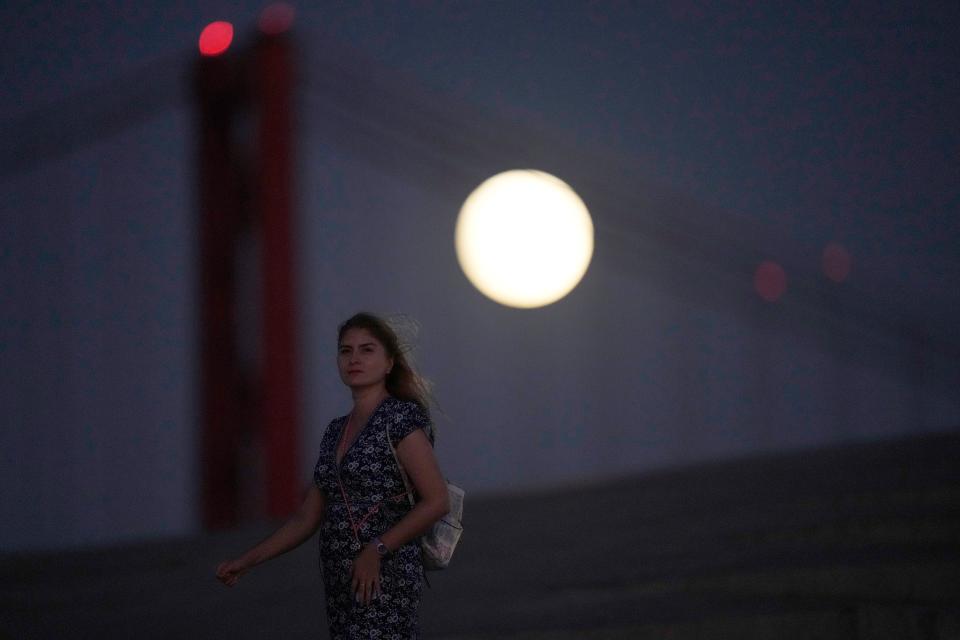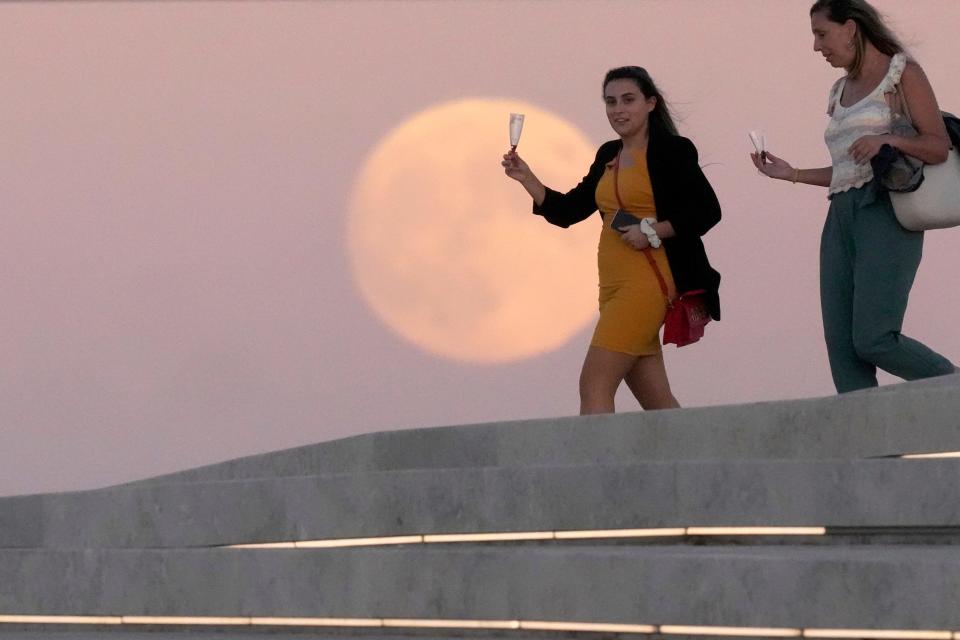Supermoon today: Details to know about harvest moon
The fourth and final supermoon of 2023 will be visible for El Paso early Friday morning.
A supermoon happens when the moon is at or near its closest point to Earth in its orbit. During those times, the moon can appear larger and shine brighter than at other points in its cycle.
This year's harvest supermoon will reach peak illumination at about 4 a.m. MDT on Friday after rising earlier in the night sky, according to the Farmer's Almanac. It will be visible Friday evening, too.
Thursday's full moon is called the harvest moon because it's closest to the autumnal equinox, which was Saturday. Farmers and other skywatchers also call September's full moon the corn moon, signifying end-of-summer harvests.

How far away is the moon?
The Moon is an average of 238,855 miles away from Earth, which is about 30 Earths away, according to NASA
When is the full moon in September 2023?
This year's harvest supermoon will reach peak illumination at about 4 a.m. MDT on Friday.
How to take a picture of the moon?
Here are tips from NASA to get an image of the moon from your phone.
Find something to stabilize your phone. If you don’t have a tripod, prop your phone up on something steady. Composition matters when you’re setting up your shot. Look for foreground objects to frame the Moon, give context, or add to the design of your image.
Turn off the flash, and focus your camera on the Moon instead of the sky, usually by touching it on your screen. To avoid a blown-out, fuzzy, white image, lower the brightness. You want the Moon to look gray rather than white. If you can see some lunar features on your screen, even better.
Use a photo timer if your phone has one to help you avoid touching and jostling the phone when you snap the picture.
You may want to try taking your photos during a time when the Moon is not too much brighter than the sky, like twilight or dawn, so that your phone’s camera will have less contrast to deal with. Or you can try taking a picture as the Moon rises over the horizon, when it tends to appear larger.
Zoom may or may not be helpful, depending on your phone. Some phones have a genuine optical zoom, but others have digital zoom and just perform a crop ― which you could do yourself after you take your picture. Experiment with your zoom to determine whether or not it will help with your Moon picture. If your phone allows you to change settings such as ISO (sensitivity to light) and aperture (the size of the opening that lets in light), try setting the ISO low and the aperture wide. If possible, you can also play with the shutter speed to ensure that the Moon is exposed correctly. Start with a faster shutter speed and adjust downward
How big is the moon?
Earth's Moon is 3.7x smaller than Earth, according to NASA.

When was the last full moon?
Thursday's supermoon is the last of four consecutive supermoons in 2023:
July's buck moon
August's sturgeon moon
August's blue moon
September's harvest moon
A blue moon is the second of two full moons in a single month, and August's blue moon was especially rare because it was also a supermoon. NASA says the next super blue moon won't come for another 14 years, when a pair will light the night sky in January and March 2037.
USA Today contributed to this report.
This article originally appeared on El Paso Times: When is the harvest moon 2023? Details to know about Friday supermoon

